William Hunter (anatomist)
William Hunter FRS (23 May 1718 – 30 March 1783) was a Scottish anatomist and physician. He was a leading teacher of anatomy, and the outstanding obstetrician of his day. His guidance and training of his equally famous brother, John Hunter, was also of great importance.
William Hunter | |
|---|---|
.jpg) | |
| Born | 23 May 1718 |
| Died | 30 March 1783 (aged 64) |
| Nationality | Scottish |
| Alma mater | University of Glasgow University of Edinburgh |
| Scientific career | |
| Fields | Anatomy, Obstetrics |
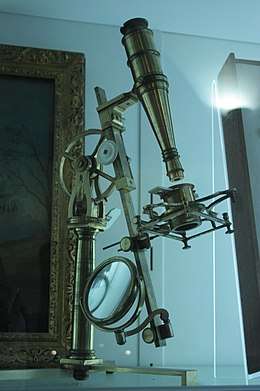
Early life and career
He was born at Long Calderwood – now a part of East Kilbride, South Lanarkshire – the elder brother of John Hunter. After studying divinity at the University of Glasgow, he went into medicine in 1737, studying under William Cullen.
Arriving in London, Hunter became resident pupil to William Smellie (1741–44) and he was trained in anatomy at St George's Hospital, London, specialising in obstetrics. He followed the example of Smellie in giving a private course on dissecting, operative procedures and bandaging, from 1746. His courtly manners and sensible judgement helped him to advance until he became the leading obstetric consultant of London. Unlike Smellie, he did not favour the use of forceps in delivery. Stephen Paget said of him:
- "He never married; he had no country house; he looks, in his portraits, a fastidious, fine gentleman; but he worked till he dropped and he lectured when he was dying."[1]
To orthopaedic surgeons he is famous for his studies on bone and cartilage. In 1743 he published the paper On the structure and diseases of articulating cartilages – which is often cited – especially the following sentence: "If we consult the standard Chirurgical Writers from Hippocrates down to the present Age, we shall find, that an ulcerated Cartilage is universally allowed to be a very troublesome Disease; that it admits of a Cure with more Difficulty than carious Bone; and that, when destroyed, it is not recovered".[2]
Later career
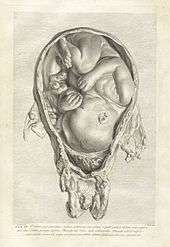
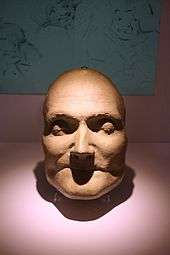
In 1764, he became physician to Queen Charlotte. He was elected a Fellow of the Royal Society in 1767 and Professor of Anatomy to the Royal Academy in 1768.
In 1768 he built the famous anatomy theatre and museum in Great Windmill Street, Soho, where the best British anatomists and surgeons of the period were trained. His greatest work was Anatomia uteri umani gravidi [The anatomy of the human gravid uterus exhibited in figures] (1774), with plates engraved by Rymsdyk (1730–90),[3] and published by the Baskerville Press. He chose as a model for clear, precise but schematic illustration of anatomic dissections the drawings by Leonardo da Vinci conserved in the Royal Collection at Windsor: Kenneth Clark considered him responsible for the Eighteenth-century rediscovery of Leonardo's drawings in England. He praised them highly in his lectures and planned to publish them with his own commentary, but never had the time for the project before his death.[4]
To aid his teaching of dissection, in 1775 Hunter commissioned sculptor Agostino Carlini to make a cast of the flayed but muscular corpse of a recently executed criminal, a smuggler. He was professor of anatomy at the Royal Academy of Arts in London from 1769 until 1772.[5] He was interested in arts, and had strong connections to the artistic world.
An avid collector
Around 1765 William Hunter started collecting widely across a range of themes beyond medicine and anatomy: books, manuscripts, prints, coins, shells, zoological specimens, and minerals. In several of these areas, he worked closely with specialists, such as Johan Christian Fabricius, and George Fordyce who used his collections as tools for new biological and chemical science. He bequeathed his collections, plus a large sum to build a museum, to the University of Glasgow. The collections survive today as the nucleus of the University of Glasgow's Hunterian Museum and Art Gallery, while his library and archives are now held in the University's library.
Hunter's coin collection was especially fine, and the Hunter Coin Cabinet in the Hunterian Museum is one of the world's great numismatic collections. According to the Preface of Catalogue of Greek Coins in the Hunterian Collection (Macdonald 1899), Hunter purchased many important collections, including those of Horace Walpole and the bibliophile Thomas Crofts. King George III even donated an Athenian gold piece.
When the famous book collection of Anthony Askew, the Bibliotheca Askeviana, was auctioned off upon Askew's death in 1774, Hunter purchased many significant volumes in the face of stiff competition from the British Museum.
He died in London in 1783, aged 64, and was buried at St James's, Piccadilly. A memorial to him lies in the church.
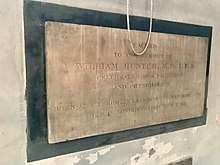
Controversy
In 2010, the self-described historian[6] Don Shelton made some lurid claims about the methods by which Hunter, his brother John, and his teacher and competitor William Smellie might have obtained bodies for their anatomical work. In a non-peer-reviewed opinion piece in the Journal of the Royal Society of Medicine he suggested that the two physicians committed multiple murders of pregnant women in order to gain access to corpses for anatomical dissection and physiological experimentation.[7] He suggested that there was an inadequate match between supply and demand of pregnant corpses and that the two physicians must have commissioned many murders in order to carry out their work.[8][9]
Shelton's comments attracted media publicity, but were heavily criticized on factual and methodological grounds by medical historians, who pointed out that in 1761, Peter Camper had indicated that figures "were not all from real life",[10] and very likely other methods than murder were available to obtain bodies of recently deceased pregnant women at that time.[11] Hunter also provided case histories for at least four of the subjects illustrated in The Anatomy of the Gravid Uterus Exhibited in Figures, published in 1774.[12] A recent review of Hunter's sources of anatomical specimens was published in 2015.[13]
Helen King indicated that the over-enthusiastic response of the media and the internet to Shelton's unreviewed speculations raised fresh questions about how medical history is generated, presented and evaluated in the media and, in particular, on the internet.[6]
See also
- Hunterian Museum and Art Gallery
- Hunterian Collection
- Hunter House Museum, his birthplace
References
- Garrison, Fielding H. 1914. An introduction to the history of medicine. Saunders, Philadelphia. p. 269.
- Hunter, William (1743). "Of the structure and diseases of articulating cartilages". Philosophical Transactions of the Royal Society of London. 42 (470): 514–521. doi:10.1098/rstl.1742.0079.
- Thornton, John L. 1982. Jan van Rymsdyk: medical artist of the eighteenth century. Oleander Press, Cambridge ISBN 0906672023.
- Wells, The Heart of Leonardo, p. 249, 2014, Springer Science & Business Media, ISBN 1447145313, 9781447145318, google books
- Kemp M (ed) 1975. Dr. William Hunter at the Royal Academy of Arts. Glasgow.
- Helen King (2011). "History without Historians? Medical History and the Internet". Social History of Medicine. 24 (2): 212.
- Don C. Shelton (1 February 2010). "The Emperor's new clothes". J R Soc Med. 103 (2): 46–50. doi:10.1258/jrsm.2009.090295. PMC 2813782. PMID 20118333.
- Campbell, Dennis (6 February 2010). "Founders of British obstetrics 'were callous murderers'". The Guardian.
- Encyclopedia Britannica Editors (7 December 2012). "William Smellie".
- Janette C Allotey (1 May 2010). "William Smellie and William Hunter accused of murder …". J R Soc Med. 103 (5): 166–167. doi:10.1258/jrsm.2010.10k019. PMC 2862065. PMID 20436021.
- Wendy Moore (1 May 2010). "Case not proven". J R Soc Med. 103 (5): 166–167. doi:10.1258/jrsm.2010.10k020. PMC 2862072. PMID 20436020.
- Founders of British obstetrics 'were callous murderers', Denis Campbell, 7 February 1997, The Observer, accessed May 2010
- Stuart McDonald + John Faithfull (2015). "William Hunter's sources of pathological and anatomical specimens, with particular reference to obstetric subjects". William Hunter's World: The Art and Science of Eighteenth-Century Collecting. Ashgate Publishing Ltd, Farnham. pp. 45–58. ISBN 9781409447740.
Further reading
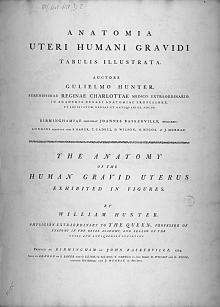
- Buchanan WW (October 2003). "William Hunter (1718–1783)". Rheumatology. 42 (10): 1260–1. doi:10.1093/rheumatology/keg003. PMID 14508042.
- Dunn PM (January 1999). "Dr William Hunter (1718–83) and the gravid uterus". Archives of Disease in Childhood. 80 (1): F76–7. doi:10.1136/fn.80.1.f76. PMC 1720874. PMID 10325820.
- James T (December 1994). "William Hunter, surgeon and Edward Gibbon, historian: an 18th century connection". Adler Museum Bulletin. 20 (3): 24–5. PMID 11639996.
- Kemp M (January 1992). "True to their natures: Sir Joshua Reynolds and Dr William Hunter at the Royal Academy of Arts". Notes and Records of the Royal Society of London. 46 (1): 77–88. doi:10.1098/rsnr.1992.0004. PMID 11616172.
- Waterhouse JP, Mason DK (April 1990). "Contributions of William Hunter (1718–1783) to dental science". British Dental Journal. 168 (8): 332–5. doi:10.1038/sj.bdj.4807187. PMID 2185812.
- Rey R (1990). "William Hunter and the medical world of his time" [William Hunter and the medical world of his time]. History and Philosophy of the Life Sciences (in French). 12 (1): 105–10. PMID 2243922.
- Buchanan WW, Kean WF, Palmer DG (December 1987). "The contribution of William Hunter (1718–1783) to the study of bone and joint disease". Clinical Rheumatology. 6 (4): 489–503. doi:10.1007/BF02330585. PMID 3329589.
- Herschfeld JJ (April 1985). "William Hunter and the role of "oral sepsis" in American dentistry". Bulletin of the History of Dentistry. 33 (1): 35–45. PMID 3888326.
- Philipp E (1985). "William Hunter: anatomist and obstetrician supreme". Huntia. 44–45: 122–48. PMID 11622001.
- Porter R (September 1983). "William Hunter, surgeon". History Today. 33: 50–2. PMID 11617139.
- Thornton JL, Want PC (September 1983). "William Hunter (1718–1783) and his contributions to obstetrics". British Journal of Obstetrics and Gynaecology. 90 (9): 787–94. doi:10.1111/j.1471-0528.1983.tb09317.x. PMID 6351897.
- "Different letters from the past 2) Tobias Smollett to William Hunter". Annals of the Royal College of Surgeons of England. 62 (2): 146–9. March 1980. PMC 2492344. PMID 6990856.
- Kapronczay K (March 1978). "The Hunter brothers: William Hunter (1718), John Hunter (1728–1793)" [The Hunter brothers: William Hunter (1718), John Hunter (1728–1793)]. Orvosi Hetilap (in Hungarian). 119 (10): 598–600. PMID 628557.
- Longo LD (May 1978). "Classic pages in obstetrics and gynecology. On retroversion of the uterus. William Hunter. Medical Observations and Inquiries, vol. 4, pp. 400–409, 1771". American Journal of Obstetrics and Gynecology. 131 (1): 95–6. PMID 347937.
- Chitwood WR (July 1977). "John and William Hunter on aneurysms". Archives of Surgery. 112 (7): 829–36. doi:10.1001/archsurg.1977.01370070043005. PMID 327974.
- Forbes TR (May 1976). "Death of a chairman: a new William Hunter manuscript". Yale Journal of Biology and Medicine. 49 (2): 169–73. PMC 2595271. PMID 782049.
- Kirsner AB (December 1972). "William Hunter: lessons to be learned from congenital heart disease". Medical Times. 100 (12): 107–8 passim. PMID 4564592.
- Illingworth C (June 1971). "The erudition of William Hunter. His notes on early Greek printed books". Scottish Medical Journal. 16 (6): 290–2. doi:10.1177/003693307101600603. PMID 4932920.
- "William Hunter (1718–1783) anatomist, physician, obstetrician". JAMA. 203 (8): 593–5. February 1968. doi:10.1001/jama.203.8.593. PMID 4870514.
- Thomas KB (July 1960). "A Female Foetus, drawn from Nature by Mr. Blakey for William Hunter". Medical History. 4 (3): 256. doi:10.1017/s0025727300025412. PMC 1034906. PMID 13838001.
- Morris WI (January 1959). "Brotherly Love: An Essay on the Personal Relations Between William Hunter and His Brother John". Medical History. 3 (1): 20–32. doi:10.1017/s0025727300024224. PMC 1034444. PMID 13632205.
- Kerr JM (September 1957). "William Hunter; his life, personality and achievements". Scottish Medical Journal. 2 (9): 372–8. doi:10.1177/003693305700200907. PMID 13467308.
- Oppenheimer JM (August 1957). "John and William Hunter and some eighteenth century scientific moods". Transactions & Studies of the College of Physicians of Philadelphia. 25 (2): 97–102. PMID 13468030.
- Ball OF (November 1952). "John and William Hunter. II". Modern Hospital. 79 (5): 87–9. PMID 13002276.
- Ball OF (October 1952). "John and William Hunter. 1". Modern Hospital. 79 (4): 86–8. PMID 12992956.
- Rudolf CR (October 1950). "Nova et Vetera". British Medical Journal. 2 (4684): 886. doi:10.1136/bmj.2.4684.886. PMC 2038933. PMID 14772509.
External links
| Wikimedia Commons has media related to William Hunter. |
- Hunter's anatomical collections
- Biography of William Hunter
- Zoological specimens
- Selected images from Anatomia uteri humani gravidi From The College of Physicians of Philadelphia Digital Library
- Works by William Hunter at Project Gutenberg
- Works by or about William Hunter at Internet Archive